Welcome to Part II of Coasting Through History! This time we look at the early years of roller coasters.
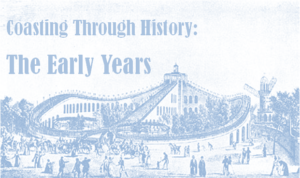 In 1817, the French became the first to design a track with grooves so that a wheeled car could traverse the track without veering off in undesirable directions. They were also the first to develop a lift hill mechanism utilizing a chain to pull the cars back up to the top of the track. This would eventually develop into modern day chain lifts usually found on the first hill of a ride. As the French design became more and more popular, roller coasters spread throughout Europe. Some people even tried to build some that included a loop, termed Centrifugal Railways, but their communities often rejected them with fears of unreliability. The first looping design was forty-three feet tall and had a thirteen foot wide loop. It was located in Frascati Gardens, Paris, France, and, as suspected, was very dangerous and did not operate long.
In 1817, the French became the first to design a track with grooves so that a wheeled car could traverse the track without veering off in undesirable directions. They were also the first to develop a lift hill mechanism utilizing a chain to pull the cars back up to the top of the track. This would eventually develop into modern day chain lifts usually found on the first hill of a ride. As the French design became more and more popular, roller coasters spread throughout Europe. Some people even tried to build some that included a loop, termed Centrifugal Railways, but their communities often rejected them with fears of unreliability. The first looping design was forty-three feet tall and had a thirteen foot wide loop. It was located in Frascati Gardens, Paris, France, and, as suspected, was very dangerous and did not operate long.
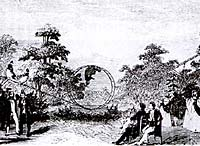 Designing looping rides was then put on a standstill until later in the twentieth century. At this time, other rides were invented that had little or no thrill factor. One such ride, the Mechanical Electric Race Course, which sounds like it would be fast, topped out at a whopping speed of ten miles per hour. It appeared as though no more advancements would be made in the world of roller coasters until an Ohio man by the name of La Marcus Thompson, showed a new eye on the matter in the mid-1800’s.
Designing looping rides was then put on a standstill until later in the twentieth century. At this time, other rides were invented that had little or no thrill factor. One such ride, the Mechanical Electric Race Course, which sounds like it would be fast, topped out at a whopping speed of ten miles per hour. It appeared as though no more advancements would be made in the world of roller coasters until an Ohio man by the name of La Marcus Thompson, showed a new eye on the matter in the mid-1800’s.
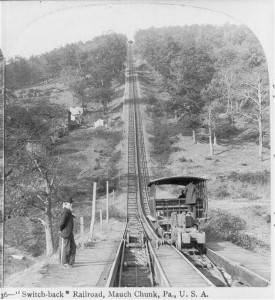 Around this time the Mauch Chunk Switchback Railroad was built as a way to get coal from the mountains of Pennsylvania to the Lehigh River. It grew to be eighteen miles long and in 1873 became more popular as a ride than coal hauler, carrying only paying passengers. The cost of an eighty minute ride was only one dollar! Inspired by the Mauch Chunk Switchback Railroad, Thompson started designing his own shorter version which opened at New York’s Coney Island park on June 13, 1884 as The La Marcus Thompson Switchback Railway.
Around this time the Mauch Chunk Switchback Railroad was built as a way to get coal from the mountains of Pennsylvania to the Lehigh River. It grew to be eighteen miles long and in 1873 became more popular as a ride than coal hauler, carrying only paying passengers. The cost of an eighty minute ride was only one dollar! Inspired by the Mauch Chunk Switchback Railroad, Thompson started designing his own shorter version which opened at New York’s Coney Island park on June 13, 1884 as The La Marcus Thompson Switchback Railway.
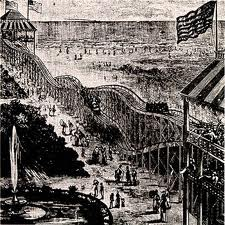 It consisted of two side by side tracks that went in opposite directions so that once a car reached the bottom of one side it could be hauled up to the top of the other and make the journey back. The track was six hundred feet long and cars traveled six miles per hour. Despite its lack of speed, people would still wait over 3 hours for a ride and it became extremely popular almost overnight. Admission to the ride was a nickel, raising a profit of six hundred dollars per day. Because of the success of The La Marcus Thompson Switchback Railway, Thompson started building his Railways worldwide with different theming. Thompson is known today as the Father of Gravity for his contributions to the roller coaster industry.
It consisted of two side by side tracks that went in opposite directions so that once a car reached the bottom of one side it could be hauled up to the top of the other and make the journey back. The track was six hundred feet long and cars traveled six miles per hour. Despite its lack of speed, people would still wait over 3 hours for a ride and it became extremely popular almost overnight. Admission to the ride was a nickel, raising a profit of six hundred dollars per day. Because of the success of The La Marcus Thompson Switchback Railway, Thompson started building his Railways worldwide with different theming. Thompson is known today as the Father of Gravity for his contributions to the roller coaster industry.
Next time we will look at a time period in which the development of the roller coaster boomed, The Golden Age.
*some information sourced from Robert Coker’s book Roller Coaster

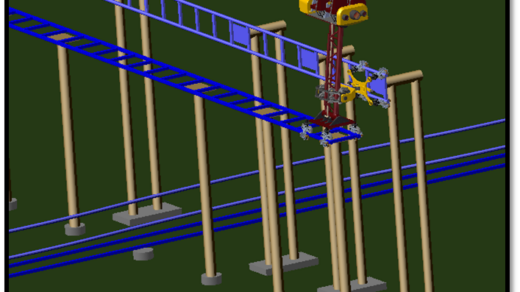
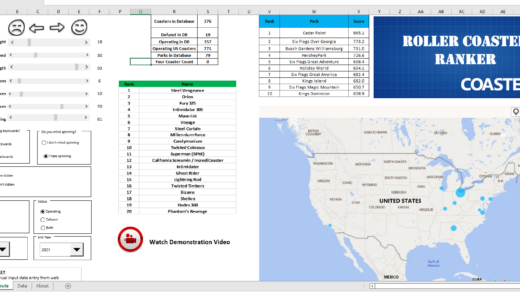






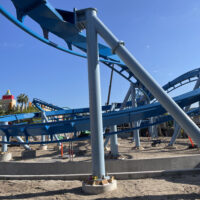





Citations?